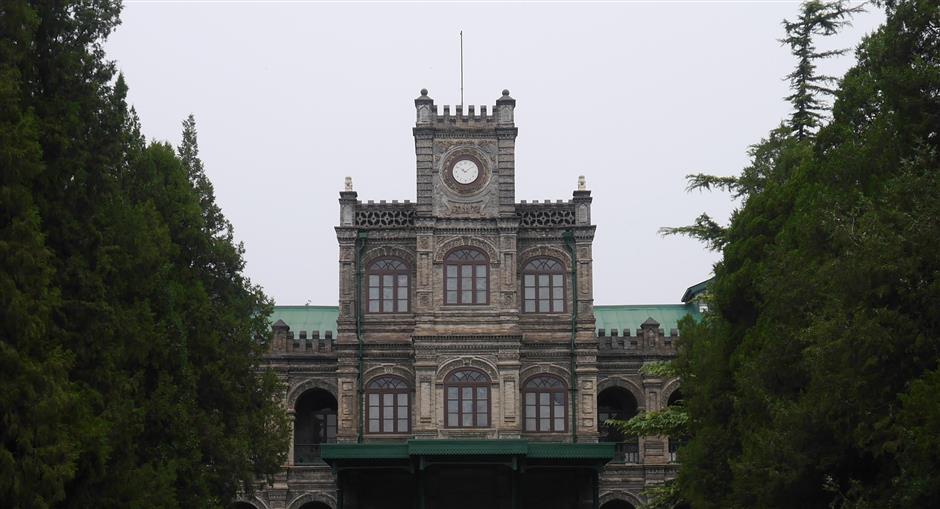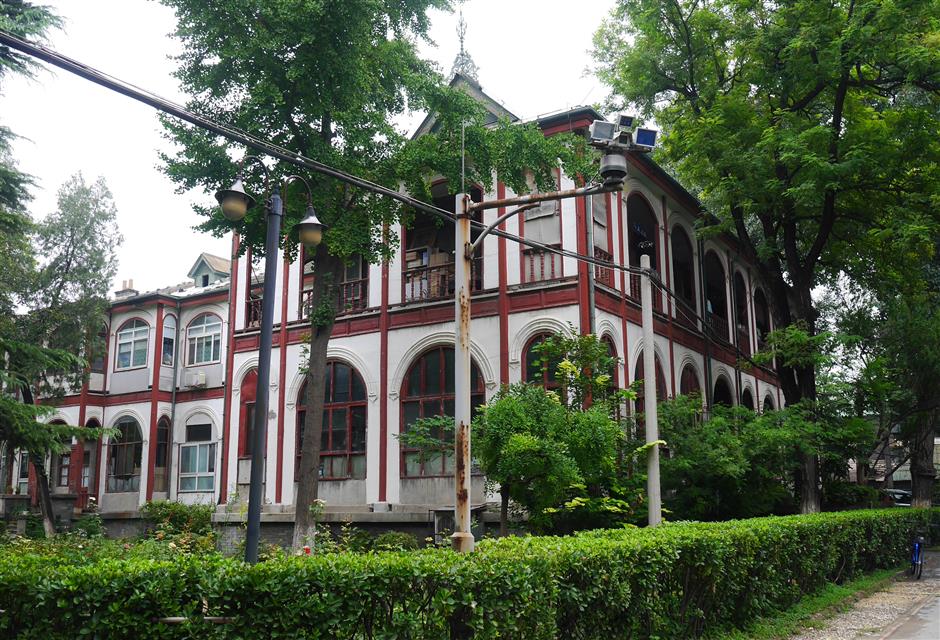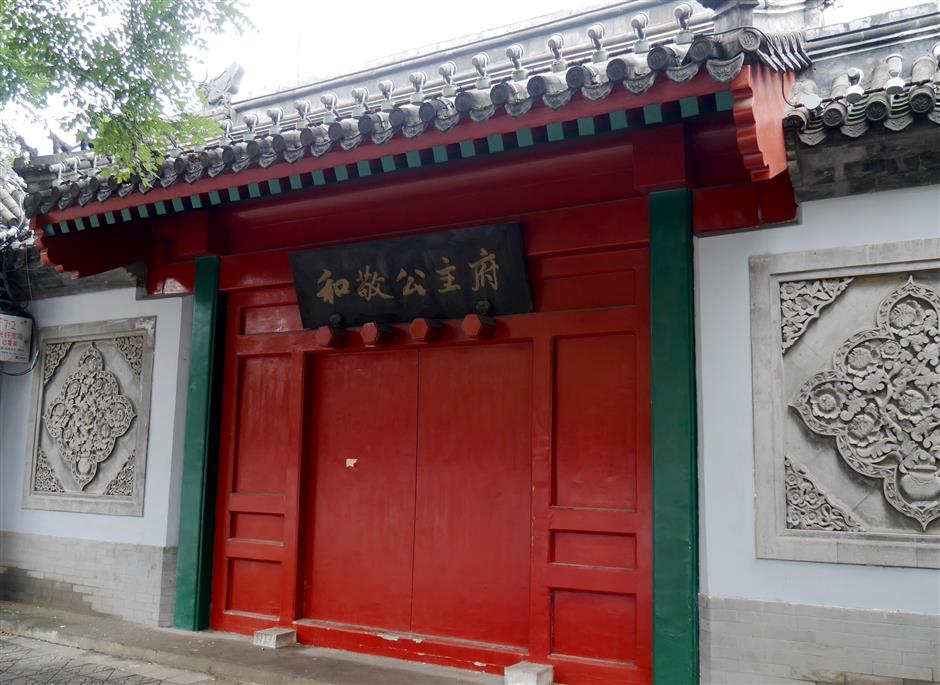A peek behind the walls on 'Lane of Iron Lions'

The main complex building, reminiscent of a British castle, was once called the "White House of China."
What I love most about Beijing is the city’s rich trove of stories. You don’t have to rub elbows with thousands of tourists at popular scenic sites to discover the inner soul of the capital. Every neighborhood, every old house has a tale to tell.
A typical example is Zhangzizhong Road in the Dongcheng District. It is locally known as Tieshizi Hutong, or the “Lane of Iron Lions.”
The wide, modern-looking road doesn’t look special at first sight, but the world behind a wall that stretches along the northern side of the street is unique though not particularly easy to access.
One of the attractions is a neighborhood complex known as No. 1 Tieshizi Hutong. Look for the two stone lions guarding the elaborately decorated Chinese-style gate.
Looking through the gate, however, you will see a grand Western-style villa inside. The contrast creates a visual impact that leaves a strong impression.
Since the 17th century, the complex was a place of great importance. At the beginning, it was the residence of Yuntang (1683-1726), the ninth son of Emperor Kangxi (1654-1722) of the Qing Dynasty (1644-1911).
After Yuntang died, several princes resided there until 1906, when the government decided to tear down the original buildings — except for the gate — in order to construct a Western-style complex of buildings. At that time, “Western style” was considered progressive and enlightened.
The new complex served as the headquarters of the Qing army and navy. It was nicknamed the “White House of China” because of its high-profile political significance.
In 1912, Yuan Shikai (1859-1916), head of the Republic of China, turned the complex into a presidential palace. In 1924, during the government of Duan Qirui (1865-1936), the complex became the seat of the central government.
The grand central villa is now empty for unknown reasons, after serving for a while as a research office for Renmin University.

Western-style annexes on the grounds of a historic complex
The complex is not open to visitors. There is a security guard at the front gate. When strangers approach, he snaps to alert and asks who they want to see. If they can’t provide a name, he shoos them away. But if you are polite and promise you won’t be long, he turns a blind eye to your entering.
I was lucky enough to charm my way in.
The whole complex is concave in shape. Several annexes surround the central villa. Despite having seen so many ancient Western-style buildings in China, I found the glamour and magnificence of this site awe-inspiring.
People might assume that the grand villa was constructed by foreigners, but it was actually designed and constructed by Chinese. The designer, Shen Qi (1871-1930), studied in the United Kingdom, which probably explains the castle-like appearance of the architecture.
Still, many traditional Chinese architectural elements abound. The roofs of the dormer windows look very much like traditional Chinese tile roofs. Stone lions sit atop roof corners, and dragon ornaments dot the exterior decor.
It was a pity that the central villa was locked for repairs. I tried to sneak in, but the locks on the doors were more impenetrable than the security guard.
Instead, I had to be content walking around the annex houses. Just as the guard explained to me, they are now residential buildings. The red-and-white houses aren’t as elaborate as the central villa, but they still look sophisticated.
Judging from the household items in doorways and on the balconies, the resident’s lifestyle is reminiscent to that of the shikumen (stone gate) houses in Shanghai.
Residents I saw seemed contented. Stray cats wandered about, looking for scraps of food put out for them by the locals. An old man napped under the sun. I felt no hostility as an intruder in the area.
I hope that the central villa will be open to the public one day. I would love to see its interior.
Stepping out of the complex, I headed to my next destination — Princess Hejing’s Mansion — just up the road. The Kurun Princess Hejing (1731-92), third daughter of Emperor Qianlong (1711-99), lived there after she married a general.
This time I was not so lucky. The mansion has been converted into the Hejingfu Hotel, and the security guard at the gate wasn’t amenable to visitors.
Maybe I will book a room there on my next visit so I can view the mansion, which is said to be well preserved.

Princess Hejing's Mansion housed a daughter of an 18th-century emperor.















